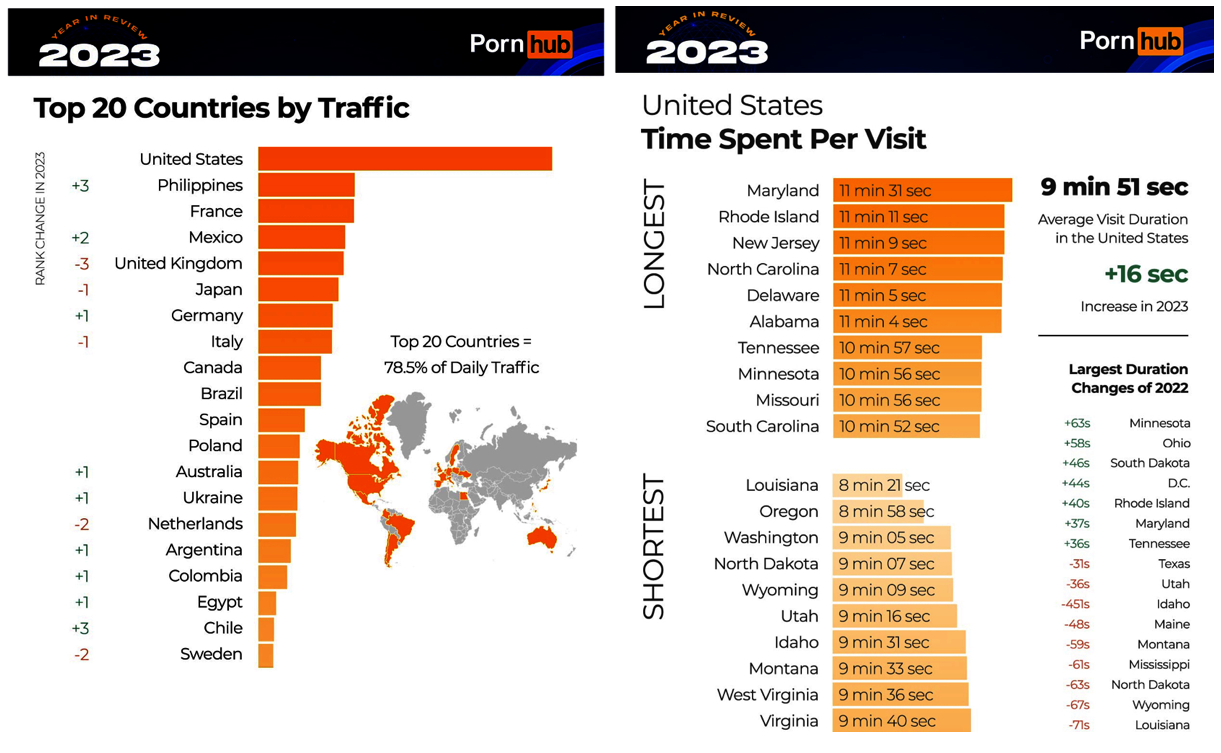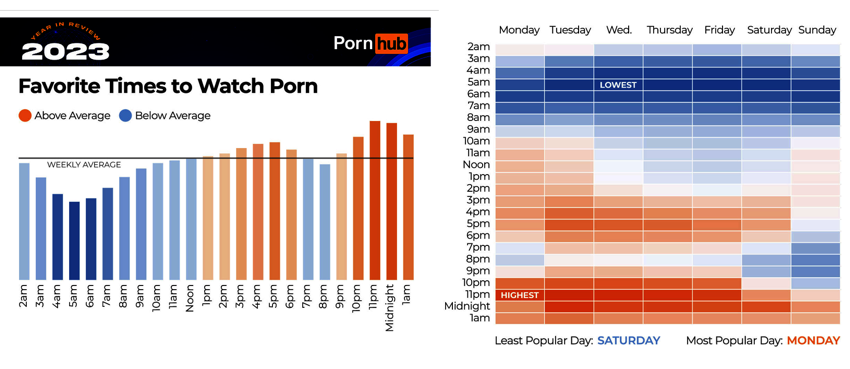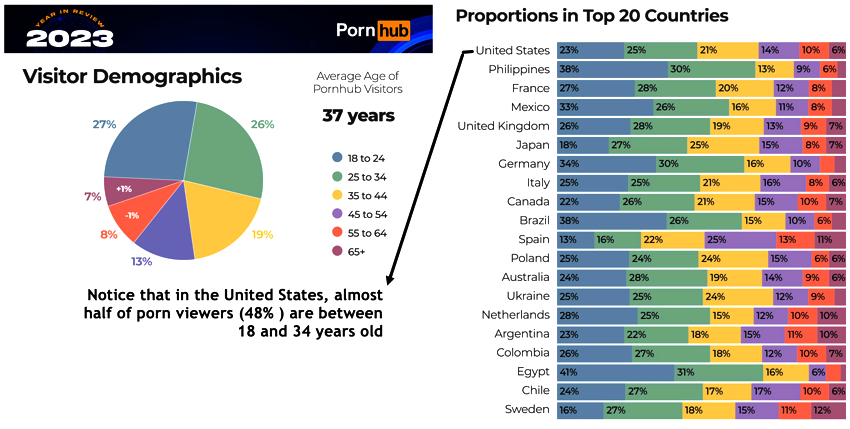This page was last modified on November 24, 2024
PSY
355 Psychology & Media in the Digital Age
This page was last modified on November 24, 2024 |

Sexuality Online (Outline)
This is a topic that covers a multiplicity of issues including educational, legal, psychological-psychiatric, including among others (in alphabetical order):
- Adult sexual solicitation of children (“pedophilia”) or adolescents ("ephebophilia")
- Children & adolescents
- Education about sexual issues
- Exploitation as “models” in pornography
- Exposure to pornography online & its impact on development
- Exchange of sexual texts & images by couples or others (“sexting”)
- Paraphilias and “deviant” sexuality
- Physical portrayal of gender: Stereotyping of females & males
- Pornography & Erotica
- Use of online pornography: demographics, reasons for
- Addiction to sexual materials online?
- General impact of porn upon adults & their relationships?
- Sexual Minorities/LGBTQ+: Education & socialization
- Solicitation for sexual meeting among adults
In this set of two classes, we will look at these 4 general topics:
- "SEXTING"
- Dating-Social Networking Services • "Hook-Up" Apps & Websites
- Disorders Related to Sexuality in the DSM-5-TR (APA, 2022)
- Obscenity vs. Pornography
"SEXTING"
- “electronically sending and receiving sexually suggestive and flirty messages or seminude or nude images and videos” (Beckmeyer et al., 2022)
- Prevalence (widely-varying estimates)
- 10-17-year-old children/adolescents: 9.6% sent/received; 9 to 27% sent; 14.8 sent/27.4% received; forwarding without consent: 8-12%
- US college students: 55% sent; 41% received; nonconsensual dissemination = 3%M 19%F; 77% (primarily reciprocal); appears to be weakly related to depression, anxiety, & sleep problems but "robustly" related with compulsive sexuality & cannabis use.
- Emerging adults (18-28 yo): 38% sending. 42% receiving; 48% reciprocal; nonconsensual forwarding 15%
- Age of Sexual Consent in the United States
- Federal Law: 18 years of age (interstate travel, international travel, federal property AND electronic communications
Individual States
- 18 years of age: AZ, CA, DE, FL, ID, ND, OR, TN, UT, VA, WI
- 17 years of age: CO, IL, LA, MO, NE, NY, TX, WY
- 16 years of age: Remaining states
- Some questions
- What are the relational issues raised by sexting? What is the nature of the relationship?
- Digital media tend to be “sticky,” that is, they tend to remain and it is hard to get rid of digital productions. What are the implications of sexting in this light?
- What legal questions are raised by sexting?
- What are the psychological questions raised by sexting?
Dating-Social Networking Services • "Hook-Up" Apps, & Websites
A large number of dating sites/apps include
The Pew Research Center (Vogels & McClain, 2023) surveyed 6,034 U.S. adults in July 2022 and found that
- 30% of all adults had ever used a dating site or app including
- 53% between 18-29 years old vs. 13% over age 65
- 28% heterosexual and 51% L-G-B
- 36% urban, 31% suburban, & 25% rural
- 52% never married, 36% divorced/separated/widowed
The Challenge of Online Dating Sites/Apps with Adolescents: The Case of 14-year-old "D" on Grindr
- Consider the case of the gay dating/hook-up app "Grindr"
- Taken from a Psychobabble podcast, hosted by Tyler Oakley and Korey Kuhl, episode 84, 4/19/2016, the following transcript consists of a message sent to the hosts which was read out loud in the episode.
“My friend, D, is only 14 and he recently downloaded Grindr and a couple of other hook-up apps. He is lying about his age and meeting men old enough to be his dad. He also has taken money to meet guys a couple of times. A close family friend saw him on the app and told his mom. I don’t think she understood the danger of it and doesn’t want to come across as homophobic and try to stop him. I’ve spoken to him and told him how dangerous this is but he doesn’t listen to me. I then asked my mom and their friends to speak to him as they probably know more than I do and have been on Grindr themselves. He still doesn’t listen and goes to men’s houses. Do you have any advice about what to do? How to meet boys his own age rather than using hook-up apps? Thanks a lot. Michelle A.”
What sorts of question and concerns come to mind as you read this? How might you begin to respond to Michelle’s request for advice?
- What principles of either morality or psychological health might guide what you’d say (let us acknowledge that what this boy and his potential partners are doing is illegal and not debate that issue.)?
- How should the boy’s mother respond?
- What about the friends of the boy’s mother?
Disorders Related to Sexuality in the DSM-5-TR (APA, 2022)
Sexual Dysfunctions (not pertinent to this lesson per se)
Gender Dysphoria (in earlier DSM editions "Gender Identity Disorder" or "Transgender Identity").
- Include (1) delayed ejaculation, (2) erectile disorder, (3) female orgasmic disorder, (4) female sexual interest/arousal disorder, (5) genito-pelvic pain/penetration disorder, (6) male hypoactive sexual desire disorder, (7) premature (early) ejaculation, (8) substance/medication-induced sexual dysfunction, (9) other specified sexual dysfunction, and (10) unspecified sexual dysfunction.
Dysphoria (from Ancient Greek δύσφορος (dúsphoros) 'grievous'; from δυσ- (dus-) 'bad, difficult' and φέρω (phérō) 'to bear') is a profound state of unease or dissatisfaction. It is the semantic opposite of euphoria. In a psychiatric context, dysphoria may accompany depression, anxiety, or agitation [Wikipedia]
Paraphilic Disorders = "The term paraphilia denotes any intense and persistent sexual interest other than sexual interest in genital stimulation or preparatory fondling with phenotypically normal, physically mature, consenting human partners” (APA, 2022)
- Sex/sexual = biological indicators of M or F (reproductive capacity) such as sex chromosomes, gonads, sex hormones, non-ambiguous internal/external genitalia
- "Disorders of Sex Development or Differences of Sex Development" (DSDs) involve multiple relatively rare conditions which are often labeled as "intersex" conditions or a variety of genetically-based abnormalities. Again, not of particular importance within the context of psych and media.
- Gender = public, sociocultural (& legally recognized) lived role as boy or girl, man or woman, or other gender. Biological factors contribute in interaction with social and psychological factors to gender development.
- Transgender = broad spectrum of individuals whose gender identity is different from their birth-assigned gender. Cisgender = congruent now with assignment as male or female
- "Transsexual" is an historical term (no longer used) for an individual seeking or undergoing or having undergone a social transition from male to female or female to male in many (but not all) cases involving a somatic transition (gender-affirming hormone treatment, genital, breast, or other gender-affirming surgery which historically was termed "sex reassignment surgery"
- Gender dysphoria (no longer "Gender Identity Disorder") occurs in individuals who experience significant incongruence between gender assigned at birth and currently experienced/expressed gender with associated significant distress.
- Gender dysphoria ≠ transgender identity
- Prevalence of transgender is very hard to estimate 0.5% to 2.6% with desire for medical treatment 0.2% to 0.6%. HOWEVER, self-reported rates of transgender identity (0.5% to 1.3%) are actually much higher than prevalence based on clinic-referred samples.
- Anomalous Activity Preferences
Obscenity vs. Pornography\
- Voyeuristic Disorder (covert spying)
- Exhibitionistic Disorder (exposing)
- Frotteuristic Disorder (non-consensual rubbing/touching)
- Sexual Masochism Disorder (undergoing humiliation, bondage, suffering)
- Sexual Sadism Disorder (inflicting humiliation, bondage, suffering)
- Anomalous Target Preferences
- Pedophilic Disorder: Interest in/actions involving prepubescent children
- ≠ "ephebophilia" (adult sexual interest/actions involving post-pubescent adolescents)
- ≥ 16 years old & at least 5 years older than the child
- Fetishistic Disorder
- Transvestic Disorder
Changing standards in Public vs. Private Morality & Law
Illegal or Morally Unacceptable in 1930
Legal or Morally Acceptable in 2024
Abortion
Sale or purchase of alcohol
Same sex behavior in private
Mixed race marriage
Same sex marriage
Suicide
Pornography
√ Abortion [Significant challenge]*
√ Sale or purchase of alcohol
√ Same sex behavior in private
√ Mixed race marriage
√ Same sex marriage
√ Suicide (for medical reasons in some states)
√ Pornography
Consensual sex between related persons
Sexual relations between children & adults
Obscenity
- still not acceptable & illegal
- still not acceptable & illegal
- still not acceptable & illegal
* Legal and moral acceptability in the United States is widely debated following the 2022 SCOTUS decision in Dobbs v. Jackson Women's Health Organization overturning the 1973 Roe v. Wade decision.
Obscenity ≠ Pornography in US Law
Obscenity
- 1st Amendment to the US Constitution
- OED Definition: “1. The character or quality of being offensively indecent, lewdness; an instance of this, esp. an obscene expression. 2. The character or quality of being horrible, offensive, or morally repugnant, etc. Also (as a count noun): an extremely offensive or objectionable gesture, statement, event, etc.
- Obscenity is a category of speech that is not protected by the 1st Amendment to the Constitution according to the ruling in Roth v. United States 354 U.S. 476 (1957)
- The prohibition against the production, distribution, or sale of sexual materials in media form comes under the laws of obscenity (not pornography). Federal obscenity laws are specified in the United States Code: 18 USC § 1460-1470 & 2252B&C. Note that Federal law does not make the possession of obscene materials (except for the depiction of minors) illegal per se.
- Three SCOTUS cases (1973, 1977, 1987) established a three-pronged test (the "Miller Test") to determine if material is obscene:
- [Prurient Interest Test] Whether the average person, applying contemporary adult community standards, finds that the matter, taken as a whole, appeals to prurient interests (i.e., an erotic, lascivious, abnormal, unhealthy, degrading, shameful, or morbid interest in nudity, sex, or excretion)
- [Patently Offensive Test] Whether the average person, applying contemporary adult community standards, finds that the matter depicts or describes sexual conduct in a patently offensive way (i.e., ultimate sexual acts, normal or perverted, actual or simulated, masturbation, excretory functions, lewd exhibition of the genitals, or sado-masochistic sexual abuse); and
- [Lacking Serious Value Test] Whether a reasonable person finds that the matter, taken as a whole, lacks serious literary, artistic, political, or scientific value.
- Material is considered obscene if it fails all three of these tests.
Pornography
- Pornography “is the explicit portrayal of sexual subject matter for the purpose of sexual arousal. Pornography may be presented in a variety of media, including books, magazines, postcards, photographs, sculpture, drawing, painting, animation, sound recording, film, video, and video games. The term applies to the depiction of the act rather than the act itself, and so does not include live exhibitions like sex shows and striptease.”
- Child pornography is, by definition, obscene at the federal and state levels. Images of child pornography are not protected under First Amendment rights and are illegal contraband under federal law.
- Section 2256 of Title 18, United States Code, defines child pornography as any visual depiction of sexually explicit conduct involving a minor (someone under 18 years of age). Visual depictions include photographs, videos, digital or computer generated images indistinguishable from an actual minor, and images created, adapted, or modified, but appear to depict an identifiable, actual minor. Undeveloped film, undeveloped videotape, and electronically stored data that can be converted into a visual image of child pornography are also deemed illegal visual depictions under federal law.
Notably, the legal definition of sexually explicit conduct does not require that an image depict a child engaging in sexual activity. A picture of a naked child may constitute illegal child pornography if it is sufficiently sexually suggestive.
- Additionally, the age of consent for sexual activity in each state is irrelevant; any depiction of a minor under 18 years of age engaging in sexually explicit conduct is illegal.
- Federal law prohibits the production, distribution, reception, and possession of an image of child pornography using or affecting any means or facility of interstate or foreign commerce. This prohibition includes any use of electronic communication including the Internet or any web- or communications-based system.
- What do we know about individuals who are involved in or use online child pornography (vs. direct sexual abusers of children)?
Compared to those who have had direct physical sexual contact with under-age children, child pornography online offenders are more likely to be: younger, Caucasian, higher levels of education & employment, fewer romantic relationships, less likely to have been sexually or physically abused as children or have a substance abuse problem or have a criminal or sexual offense history; show somewhat more empathy for victims, have higher levels of emotional loneliness, passivity, and self-esteem as well as higher levels of sexual pre-occupation, sexual attraction to children, pedophilic fantasy, and use of sexual activity as a coping strategy. Evidence on overall mental health differences are mixed (Henshaw et al., 2015).
- What does research find about online pornography by heterosexual male consumers? (Mikorski et al., 2017)
- Highest use among young adult men, 18-26 years old. 50% of these men view porn weekly and another 20% daily or every other day.
- Women are portrayed in heterosexual online pornography as sexually objectified images (props for male sexual pleasure, used for the male’s pleasure or involved in gang rape).
- Adolescent boys who consume higher levels of porn tend to view women as sex objects, hold to more traditional ideals of masculine pursuit of women, pay more attention to physical than personality traits.
- Some evidence that greater pornography use is associated with endorsement of the Playboy role, males holding power over women, and males acting in violent ways.
- These findings are consistent with the research literature on "sexual objectification" in which
“sexualized individuals are more likely to be processed and categorized as if they were objects and are also perceived as possessing fewer humanlike traits than nonsexualized individuals. In addition, sexualization prompts negative behaviors such as social exclusion. Altogether, these findings shed light on mechanisms that might underlie violence toward sexualized individuals” (Bernard et al., 2020, Abstract).
As Willis et al (2022) report, the finding of a link between pornography and sexually objectifying attitudes “has been consistently found across methodologies and across countries” (p. 1299). The results of sexual objectification “may contribute to a variety of negative psychological outcomes for those objectified including greater body shame or anxiety which can lead to depression, eating disorders, trauma symptoms, and sexual dysfunction… there is [some] evidence that endorsing sexual objectification can lead to acceptance of violence against women… (p. 1307)
Note that there are no diagnostic categories per se in the DSM-5 for
- Hypersexuality/Compulsive sexual behavior disorder
- Internet addiction
- Pornography addiction
- BUT there are categories for “Impulse Control Disorder” as well as a variant of “Substance-Related and Addictive Disorder” involving a behavioral addiction
The DSM-5 does recognize “Internet Gambling Disorder” [“a pattern of excessive and prolonged Internet gaming that results in a cluster of cognitive and behavioral symptoms, including progressive loss of control over gaming, tolerance, and withdrawal symptoms, analogous to the symptoms of substance use disorders”]
Three A’s which have promoted the use of online pornography: access, affordability, and anonymity.
If there IS a relationship between pornography and mental health, demonstrating that relationship scientifically is difficult for various reasons:
Cause and Effect is unclear across most of the research literature:
- Do psychological disorders or problems prompt individuals to turn to pornography as a way of coping?
- Does the use/repeated exposure to pornography lead to psychological problems or disorders?
Experimental work is quite limited for practical and ethical reasons:
- Finding contemporary groups who have not been exposed to pornography as adults is quite difficult. Who would serve as a control group?
- Creating an experimental group which would be exposed to significant levels of pornography to see if psychological problems developed would be unethical
- Exposing children or adolescents to pornography would be unethical.
Problematic Use of Online Pornography [OP] (Mennig, Tennie, & Barke, 2022)
- Used the Online Pornography Disorder Questionnaire (OPDQ)—an instrument which adapted the official criteria for Internet Gaming Disorder to online pornography—to measure problematic use and investigated to what extent consumers with a self-perceived problematic use of online pornography differed from casual users with regard to their psychological distress.
- An online sample of German adult visitors to a popular casual dating site completed the OPDQ, the Brief Symptom Inventory (BSI), and provided information on their online pornography use (n = 1539; 72.6% male; 31.43 ± 11.96 years).
- Of the users, 5.9% fulfilled the criteria for problematic use. This group consumed online pornography for longer amounts of time and showed higher levels of psychological distress
- Problematic use is linked to “emotional difficulties such as feelings of shame & guilt, increased feelings of inadequacy, worry, and aggression…[and correlates] with relationship and interpersonal problems, such as disputes, lying, or social isolation…There seems to be an association between problematic OP use and psychopathological symptoms…[including] depression, anxiety, stress, loss of self-concentration, lower self-esteem, as well as reduced physical and psychological well-being”
- Overall, the results of the study indicate that self-perceived problematic use of online pornography seems to be linked to severe psychological distress that may warrant clinical attention (see chart below)
Online Pornography: Some Usage Data
The largest online consortium in the world distributing pornography is Pornhub. It is one of several pornographic video-streaming websites owned by a Canadian multinational conglomerate named Aylo (previously MindGeek). As of November 2024, Pornhub was the 20th-most-visited website in the world and the most visited adult website (XVideos was 2nd) {Wikipedia}. The operations of
Aylo are complex and the company has been the subject of major legal and other challenges by governments and business organizations.
Pornhub publishes detailed information about who, where, and when visitors use their website. Here are the most recent general data (consulted in November 2024 but unchanged from 2023):
- Over 100 billion video views per year
- 100 million+ daily visits to Pornhub and 36 billion+ visits per year
- 20 million registered Pornhub users
- Average visit duration 9 minutes 59 seconds
- 74% of Pornhub visitors are men; 26% are women
- Average age of Pornhub users is 35.3 years (60% < 35 years old)
- 76% of traffic comes from mobile devices including smartphones & tablets.



As you consider these different kinds of data, do they suggest any conclusion or insight into what the world of media is like as we move toward the second quarter of the 21st century?
References
American Psychiatric Association. (2022). Diagnostic and statistical manual of mental disorders, 5th edition, Text revision. Arlington, VA: American Psychiatric Association. [DSM-5-TR]
Bernard, P., Cogoni, C., & Carnaghi, A. (2020). The sexualization-objectification link: Sexualization affects the way people see and feel toward each other. Current Directions in Psychological Science, 29(2), 134-139. https://doi.org/10.1177/0963721419898187
Henshaw, M., Ogloff, J. R. P., & Clough, J. A. (2015). Looking beyond the screen: A critical review of the literature on the online child pornography offender. Sexual Abuse: A Journal of Research and Treatment. https://doi.org/10.1177/1079063215603690
Mennig, M., Tennie, S., & Barke, A. (2022). Self‑perceived problematic use of online pornography is linked to clinically relevant levels of psychological distress and psychopathological symptoms. Archives of Sexual Behavior, 51, 1313-1321. https://doi.org/10.1007/s10508-021-02101-w
Mikorski, R., & Szymanski, D. M. (2018). Masculine norms, peer group, pornography, Faceboo, and men’s sexual objectification of women. Psychology of Men and Masculinity, 18(4), 257-267. https://dx.doi.org/10.1037/men0000058
Vogels, E. A., & McClain, C. (2023, Feb. 2). Key findings about online dating in the U.S. Pew Research Center. https://www.pewresearch.org/short-reads/2023/02/02/key-findings-about-online-dating-in-the-u-s/
Willis, M., Bridges, A.J. & Sun, C. (2022). Pornography use, gender, and sexual oObjectification: A multinational study. Sexuality & Culture, 26, 1298–1313. https://doi.org/10.1007/s12119-022-09943-z